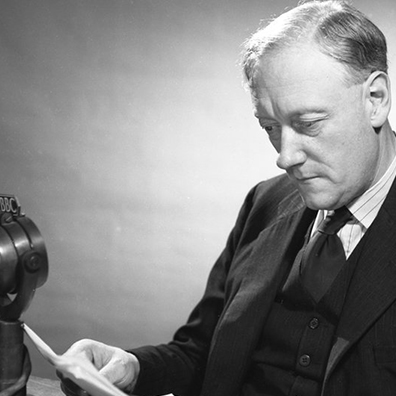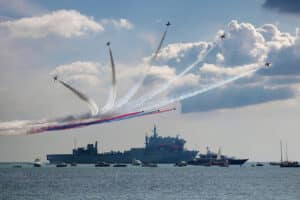
Investigating an airline accident – Part III

In the United States, the Federal Aviation Administration sets the rules for aviation, but it is the National Transportation Safety Board (NTSB) that is tasked with conducting investigations into aviation accidents and incidents (See Note 1). The goal during an investigation is to keep the investigators as free from regulatory pressures and politics as possible. This has worked remarkably well, I am pleased to report, ever since the U.S. stood up an accident investigation body back in the 1920s.
Almost as soon as the NTSB learns of an accident or serious incident it sends out a “go team.” Such a team is always on call and can be deployed with as many members as the severity and type of the accident merit. The team, along with various primary investigators, will also have an Investigator in Charge (IIC) and normally one of the top board members. This arrangement gives the team both the technical expertise it needs and, with the board member present, the necessary authority.
Naturally the go teams try to reach the accident scene as quickly as possible—something that might be as simple as getting on a commercial flight or as complex as having to charter an ocean-worthy vessel. Once they reach the site however, their mandate is clear—to collect the data that will uncover the reason that the aircraft crashed.
The investigator in charge will set up a base of operations from which he/she can direct the investigation. There are a thousand and one things to do in this initial stage. Here are a few:
• Work with local law enforcement to ensure the site is secure
• Preserve as much evidence as possible
• Locate and recover the data and voice recorders
• Examine, photograph, and document the wreckage—wreckage that very well might be spread out over miles
• Speak with witnesses
• Determine the path of the aircraft when it crashed
• Determine if the engines were developing power
• Determine if the aircraft was under some level of control by the pilots. What, for example, instrumentation did the pilots have?
• Did terrain play a role?
•Were there explosions? Did the aircraft have fuel?
• Was there structural failure before the aircraft came to rest—in other words did it come apart in flight?
• Order toxicology and blood tissue reports on the pilots. Were there signs of medications? Alcohol? Poisons?
• Look for signs of smoke before the accident—was there, for example, smoke in the cockpit or cabin?
• What was the weather before the accident?

In addition to all the work that is being done at the scene of the accident, other investigators and support personnel will research:
• How many total flight hours did the pilots have? How many in that type of aircraft? How many hours did they fly in recent weeks and months?
• When did they last have simulator training? When was their last medical examination?
• When had the aircraft been overhauled? Were there any outstanding issues that had not yet been repaired?
• How did the airline dispatch this flight? In other words, was it a domestic or international flight? How much fuel did it have on board?
This is far from being just an office exercise as the investigators might need to make visits to the engine and airframe manufacturing plants, parts warehouses, and the airline’s HQ’s to review training and maintenance programs.
You can see that investigations are a complex deep dive. A complex investigation can take years—something that does not go well in our culture’s desire for immediate answers.
Quite often the NTSB asks Subject Matter Experts (SMEs) to provide expert analysis. We saw this during the investigation into the 1996 crash of TWA 800—the flight that went down east of Long Island due to a fuel tank explosion. The NTSB was hearing reports that the aircraft might have been shot down by an errant sea to air missile launch. To learn more, it brought in an actual missile expert from the Navy to offer testimony.
Normally the NTSB releases a 30-day preliminary report. This might sound a bit rushed since I just told you how long it takes to run a full investigation, but a 30-day report serves a number of goals. Among them, it gives the aviation community a general idea of what might have happened as well as bringing to light safety considerations that might be time critical.
Note: There are exceptions. On the 23rd of February of 2019 a Boeing 767 crashed into the bay near Houston, Texas. As I write this at the end of April, I still have not seen much of a report—a strong sign that there are some serious questions that have yet to be satisfactorily answered.
The capstone of any airline accident investigation is the final report. In this report the safety board discusses its conclusions, provides probable causes for the accident, and then makes recommendations.
The conclusions section might be hundreds of pages long. In it, the board carefully lays out what it has discovered. Rarely are accidents caused by just a single factor and here you can see how the investigators tie many threads together. This is pure detective work and the conclusions are most often Sgt. Joe Friday’s “Just the facts ma’am” without a lot of undue speculation.
But in those facts lie causes—causes both direct and indirect that run the gamut of what did, what can, and what does go wrong. It is here that the board discusses such things as structural or engine failure, crew error, cargo that caught on fire, weather, improper maintenance, etc.
In the final portion of the NTSB report we find the recommendations. The NTSB’s primary duty is to enhance aviation safety and it is here where the board makes specific recommendations to achieve that goal.
This is the idea that I touched on earlier. The safety board investigates the crash and puts forth what it believes to be the causes. It then offers recommendations to prevent it, and similar accidents, from happening again.
The ball is now back in the regulatory agency’s court to consider the board’s report and make the changes to the regulations that it sees fit. Surprisingly, not all the recommendations will be accepted—not by a long shot. The FAA weighs many economic, technological, and legal factors to determine if it is feasible to adopt the NTSB’s recommendations. In fact, there are recommendations on the books that the NTSB has made multiple times over the years and that the FAA has not adopted. It took the FAA decades, for example, to introduce regulations regarding pilot fatigue mitigation.
Here is a link to the NTSB’s searchable database where you can find information and reports on all the accidents and incidents that it has investigated. It is worthwhile to take a few moments just to scroll through and see the details of an investigation and how much effort is put in to ensure that flying remains safe: NTSB Accident Database

Sometimes the findings of the NTSB are disputed. In an accident the stakes are high for the airlines, pilot groups, manufactures, and others. To allow for these voices to be heard the NTSB allows public comments to the reports it files and it is not rare to find disagreements here and there.
A famous example is the effort launched by the Egyptian government in disputing what the NTSB found during its investigation of the crash of Egypt Air 990. This flight went down near Nantucket in October, 1999 and the NTSB, which at first handed the investigation to the FBI as it suspected a crime, eventually ruled “Not determined” in the case—something it does not often do. A number of experts however, suspect pilot suicide was the cause—understandably a poor mark for the airline and thus the remarkable level of dissent it, and the government, lodged.
As I close, I remind the reader that there will always be some risk to flying, but the modern aviation system has an astonishingly good safety record. The FAA, and its counterparts in countries around the world, balance the economics and practicality of implementing what agencies such as the NTSB recommend to make sure that record remains as good as it is. While I would like for them to adopt every recommendation, that is perhaps not realistic.
In the meantime, as Ernest Gann taught us, Fate is the hunter and it never rests—and that means that those of us in the aviation community cannot either.
Should you wish to know the qualifications to be an accident investigator I found this link helpful: https://www.thebalancecareers.com/ntsb-aviation-accident-investigator-job-information-974518
Also, if you as the reader would like to know what the airlines and agencies such as the FAA do with the NTSB’s recommendations, I will be happy to write another article–just let me know.
Should your travel plans require air travel, then may all your flights be above average!
![]()
Note 1: In the world of health and safety there is a difference between accidents and incidents. Broadly speaking, in an incident property is damaged whereas in an accident, humans are killed or injured. You can see an introduction here: Accidents and Incidents
Sometimes there can be a dollar value that is assigned. Imagine a scenario in which a plane hits part of the jet-bridge as it is taxing toward the gate. While this will be expensive, it is nowhere close to the cost if the airplane, while sitting at the gate, caught fire and burned to the ground. In the latter example, since the aircraft has received substantial damage it is considered an accident even though there were no injuries or deaths.
The word “crash” is a bit tricky. Purists normally do not use it in formal safety programs and instead stick with the aforementioned accident or incident. But…even the NTSB uses the word crash on its website to break up the monotony of the terms. I definitely agree with their approach as the word is so common that it needs no introduction. We can certainly mix it up and leave the formality to the written reports where we need the accuracy.







Enjoyed learning through your series!
Thank you Claudine–I appreciate the remarks and correction suggestions! Should you wish to see something from the flying field covered don’t hesitate to ask and I will see what I can do.